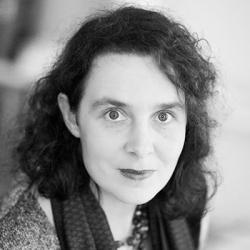Objects in Artworks
Workshop
Objects in Artworks
This workshop included lectures held by Marta Dziewanska and Antje Kramer as well as a reading workshop.
See the relevant publications for online reading:
- Marta Dziewanska: https://dfk-paris.org/en/node/1361#/resolve/articles/23145 (first edition at https://perspectivia.net/receive/pnet_mods_00000080 (pdf)).
- Antje Kramer: https://dfk-paris.org/en/node/1361#/resolve/articles/23145 (first edition at https://perspectivia.net/receive/pnet_mods_00000083 (pdf)).
Lectures
Marta Dziewanska
“Alina Szapocznikow: Sculpting the 'Real'”
Alina Szapocznikow began working in the post-war period in a classical figurative style. From the second half of the 1950s, she took advantage of the weakening of the Polish Communist system and rapidly developed a conception of sculpture as a palimpsest not only of memory but of her own body. This was expressed in a legacy of provocative objects – at once sexualized, fragmented, vulnerable, political and full of humour – that sit uneasily on the borderline of Surrealism, Nouveau Réalisme and Pop Art. Her tinted polyester casts of her lips and breasts were transformed into everyday objects, such as lamps and ashtrays; her poured polyurethane forms and her construction of sculptures incorporating photographs are as remarkably idiosyncratic and contemporary today as they were when they were first made. What is fascinating in Szapocznikow's work today is this artist's highly characteristic readiness to take risks in her formal and existential experiments, which led her from traditional sculpture to contemporary art. This presentation aims to examine ways in which “the real” – such as personal experiences and the spirit of the era – moulded Szapocznikow's oeuvre, and how her work became a mirror of her time. Studying the short time of her artistic career, which was defined by her experiences at the concentration camps and also by illness, which ultimately claimed her life at the age of 47, we will focus on her body of work, which testifies to her fate, her aspirations and obsessions, and at the same time, in a more universal sense, to the condition of a contemporary female artist faced with the challenges that life presented her.
See the relevant publication for online reading: https://dfk-paris.org/en/node/1361#/resolve/articles/23145 (first edition at https://perspectivia.net/receive/pnet_mods_00000080 (pdf)).
Antja Kramer
“Visions of the Real in Nouveau Réalisme”
Among the archives of the art critic Pierre Restany is a typescript written as a supplement to the definition of “Realism” in the ten-volume Grand Larousse Encyclopaedia. According to Restany's definition, Nouveau Réalisme was a clearly-defined movement. It is described as a group of thirteen artists gathered together by an art critic to focus on the notion of “the appropriation of the real”, who produced an inaugural declaration on 27 October, 1960, followed by three manifestos and three group exhibitions, before officially disbanding in February 1963. This interpretation has dominated art publications and exhibitions for almost fifty years. However, such a “unicist” approach to an art style that is identified with the consumer society, which was constantly repeated and expanded by Restany in his role as conscientious historian, falls apart when we take a closer look at the individual viewpoints expressed by artists from the group. While Restany established a specific terminology associated with notions of the “real”, “reality” and “realism” that sought to “restore man's place in the real” – in short, to draw a consensus between art and society – this aim is actually a far cry from, and perhaps even contrary to, the individual ambitions of the group's members. This can be observed in the discourse of Yves Klein and Jean Tinguely, who embarked on a quest to develop the founding concepts of a “total art” experience, capable of altering the fate of society. This seminar will provide an opportunity to examine notions of the “real” and “reality” as employed by members of Nouveau Réalisme in order to reassess Restany's interpretation in relation to the views of group members and thereby challenge a dominant reading of this movement that has all too often confined its analysis to the group's exploration of the grammar of objects.
See the relevant publication for online reading: https://dfk-paris.org/en/node/1361#/resolve/articles/23145 (first edition at https://perspectivia.net/receive/pnet_mods_00000083 (pdf)).
Reading Workshop
Conceived by Clara Pacquet
- Jean Baudrillard, chap. “Introduction” in id., Le système des objets, Paris, Gallimard, 1968, p. 7-18
- “Entretien Marcel Duchamp - James Johnson Sweeney”, in Duchamp Du Signe. Écrits, ed. by Michel Sanouillet and Elmer Peterson, Paris, Flammarion, 1975, p. 175-185
- “Le choix des mots et des objets”, in Entretiens avec Marcel Duchamp, ed. by Georges Charbonnier, Paris, André Dimanche Éditeur, 1994, p. 53-66
- Alain Robbe-Grillet, “Une voie pour le roman Futur”, in id., Pour un nouveau roman, Paris, Minuit, 1961, p. 15-23
- Pierre Restany, “Die Beseelung des Objekts”, in Das Kunstwerk. Zeitschrift für moderne Kunst, volume XV, 1961/1962, number 1/2, July/August 1961, p. 37-56
- Tadeusz Kantor, “La chaise et son histoire”, in id., Métamorphoses, transl. by Jerzy Lisowski, Paris, 1982, p. 121-125
- Rosalind Krauss, “On ne joue plus”, in L'originalité de l'avant-garde et autres mythes modernistes, transl. by J.-P. Criqui, Paris, Editions du Chêne/Hachette - Galerie de France, 1993, p. 213-262




